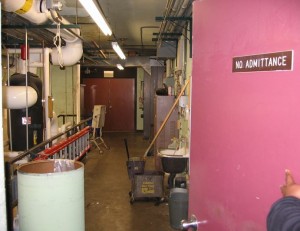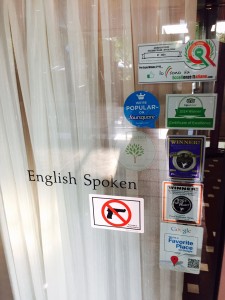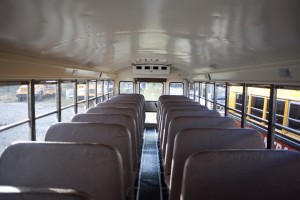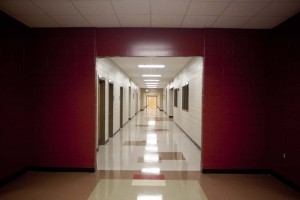
This unlocked boiler room is the type of location where students sometimes engage in sexual activities. Space management is an important concept for school officials to use to prevent both consensual sexual encounters and sexual assaults.
Sex in K12 Schools
Kevin Wren is a school safety professional in South Carolina who has attended several of my presentations. He recently sent me a link to a news story involving two New York City school teachers who were allegedly caught having sex in a classroom. Both teachers have been reinstated and will continue to teach in the same school because no students were present in the classroom when the alleged incident took place.
Kevin recalled me asking audiences the important rhetorical question “when is it acceptable for people to have sex in K12 schools?” This case is an excellent example of why I sometimes have this discussion with audiences when I keynote conferences.
Of Course not!
Obviously the correct answer is that it is never acceptable for people to engage in sex in K12 schools. My follow up question to the audience is “but do people have sex in K12 schools?” The answer to that question is that this occurs far more often than the average person realizes. Whether the sexual acts involve a sexual assault or molestation, consensual acts between students, consensual acts between a student and an employee or as in this recent case, and allegation of consensual sex between adults, sex on K12 campuses are a serious problem.
A Significant and Recurring Problem in Schools
Over the years, there have been too many examples of these types of problems to count. I am currently working as an expert witness on two such cases and have just been asked to review a third case involving an allegation of this type for a law firm that is attempting to determine if they should litigate school officials or not. I have seen many troubling cases of this type covered in the national news including one incident where someone videotaped a school principal having sex with a teacher, posted it on the web, and sent it to school board members. I declined a case where a district was being litigated in federal court which involved seven students having sex with a special needs child for more than one hour. I had been asked to conduct a security assessment for the district in their attempt to address the event. In this particular case, I was approached by both defense and plaintiff’s counsel but I advised them both that I felt there would be a conflict of interest.
Preventing Sexual Assault and Sexual Misconduct in Schools
This recent school sex scandal demonstrates the need for thoughtfully developed and clearly communicated policies for students and staff that are designed to minimize the opportunities for incidents involving sexual assault and sexual misconduct to occur. The policies can include structured student supervision, requiring employees to keep unattended spaces locked, prohibiting school staff from covering classroom and office windows (with exceptions for emergency situations such as lockdown), and guidance on staff and students being alone in private areas.
While no measures are foolproof, implementing, communicating and enforcing appropriate practices can help to prevent these types of incidents as well as to make it easier to respond to them more effectively should an incident occur.




